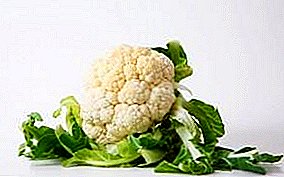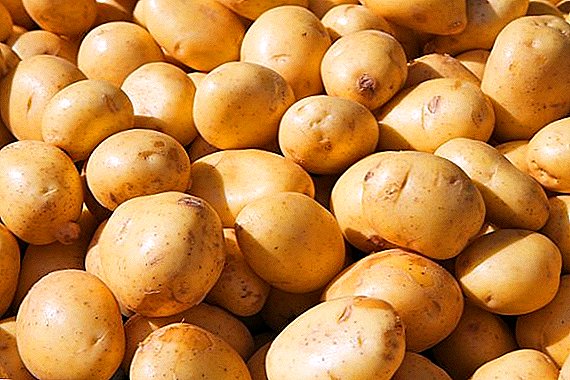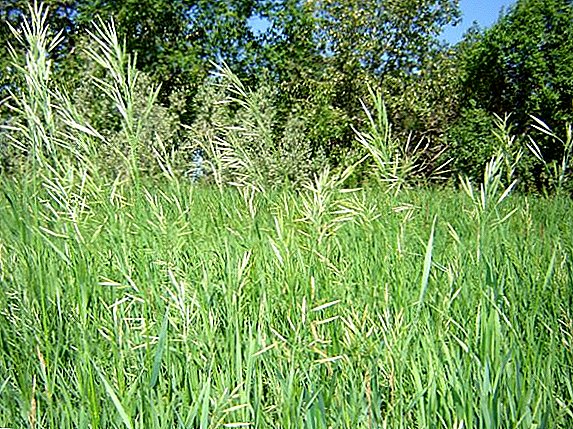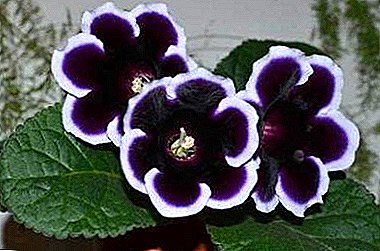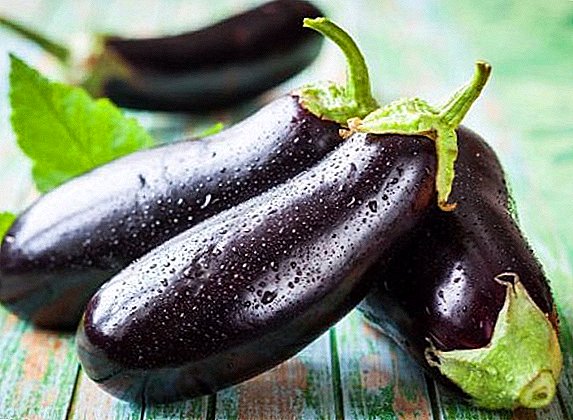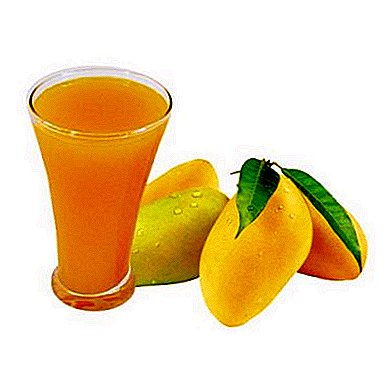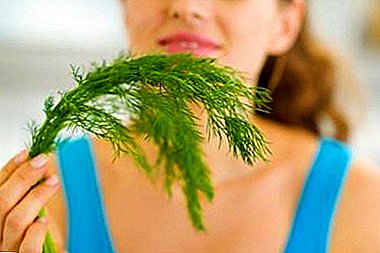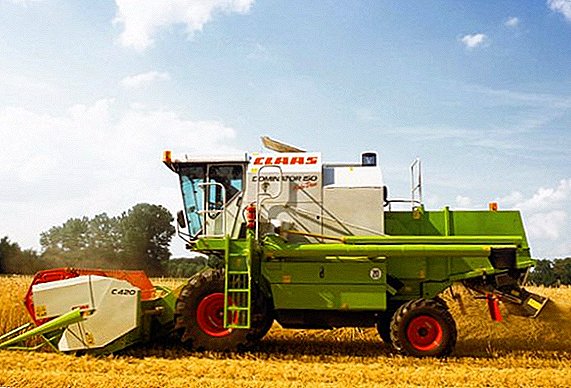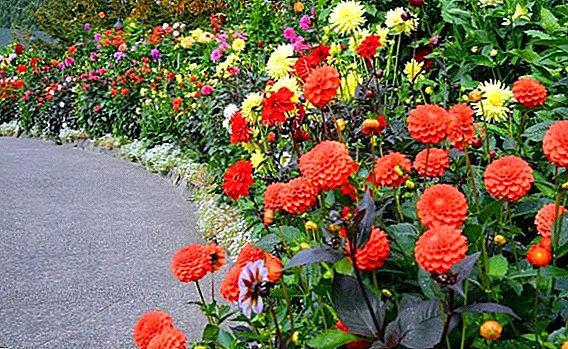 As a plant for the border uses many types of flowers, both annual and perennial. Many of them are rare or expensive. We offer you a list of the most beautiful and, at the same time, available types of annuals, which you can easily plant in your flower bed.
As a plant for the border uses many types of flowers, both annual and perennial. Many of them are rare or expensive. We offer you a list of the most beautiful and, at the same time, available types of annuals, which you can easily plant in your flower bed.
Marigold
Marigolds are most accessible border plants, the seeds of which can be purchased anywhere - both in flower shops and in the marketplace at grandmothers.  The flower got its popularity due to unpretentiousness and decorative qualities. That is why it was based on an infinite number of color variations, which differ in height and diameter of the bud.
The flower got its popularity due to unpretentiousness and decorative qualities. That is why it was based on an infinite number of color variations, which differ in height and diameter of the bud.  Marigolds belong to the Astrov family, have branched stems and dissected leaves. Flowers terry or semi-double. Depending on the variety or hybrid, they may have a different color (all colors are warm).
Marigolds belong to the Astrov family, have branched stems and dissected leaves. Flowers terry or semi-double. Depending on the variety or hybrid, they may have a different color (all colors are warm).
Important! Before buying flowers for the border is to clarify whether this one-year variety or perennial.
Low-growing marigolds can have a height of 20-30 cm, tall ones - 60-80 cm. Depending on the height, the diameter of the bud varies. The smallest flowers have inflorescences with a diameter of 3-5 cm, the largest - 10-12.  The plant is used not only for landscaping or creating flowering borders, but also for fighting nematodes that affect many plants popular in the garden.
The plant is used not only for landscaping or creating flowering borders, but also for fighting nematodes that affect many plants popular in the garden.
Did you know? The first connoisseurs of marigolds were the Aztecs, the indigenous people of modern Mexico. They called these flowers "sempoalshuchtl" and they planted their gardens.
Coreopsis
Koreopsis, or "flower of the sun", came to us from North America and was warmly received by many gardeners. The genus includes at least 120 species and countless hybrids, which are derived to this day.  In the people the flower is most often called "lenok" or "Parisian beauty."
In the people the flower is most often called "lenok" or "Parisian beauty."
As in the case of marigolds, varieties can be both annual and perennial. For disembarkation green curb annuals are used, which should be considered when choosing a species or a hybrid.  Coreopsis has an erect stem, palmate-separated or pinnately dissected leaves. Inflorescences are baskets on a thin leg, which are painted yellow or darker shades. The height varies from 45 to 120 cm (low variations are used for the border), the diameter of the inflorescences is 4-10 cm.
Coreopsis has an erect stem, palmate-separated or pinnately dissected leaves. Inflorescences are baskets on a thin leg, which are painted yellow or darker shades. The height varies from 45 to 120 cm (low variations are used for the border), the diameter of the inflorescences is 4-10 cm.  Annual coriopsis has a small height (30-50 cm). Dwarf plants can not grow up to 20 cm. Most often use the following species as annuals: Drummond, dyeing, ferulolistny.
Annual coriopsis has a small height (30-50 cm). Dwarf plants can not grow up to 20 cm. Most often use the following species as annuals: Drummond, dyeing, ferulolistny.
If you want to create a border of perennial flowers, use a dicenter, balsam, bells, lilies of the valley, chrysanthemum in the decor.
Chrysanthemum maiden
The chrysanthemum maiden is an excellent color for the border; another name is Matrikaria maiden.
This is a representative of the Astrov family, which is used by gardeners as an annual for the reason that it is extremely difficult to keep the plant in winter in the middle climate zone.  It looks like chrysanthemum flowers maiden resemble a large chamomile and retain the same color. Inflorescences with a diameter of 3-4 cm. Plant height varies from 25 to 70 cm. The leaves are pinnately dissected, light green in color.
It looks like chrysanthemum flowers maiden resemble a large chamomile and retain the same color. Inflorescences with a diameter of 3-4 cm. Plant height varies from 25 to 70 cm. The leaves are pinnately dissected, light green in color.
Chrysanthemum fell in love with many gardeners for the reason that maintains well drought, cold and grows on almost all more or less fertile soils.  For planting on the curb, dwarf varieties are used in pure form or in tandem with ageratum.
For planting on the curb, dwarf varieties are used in pure form or in tandem with ageratum.
Did you know? The name "Chrysanthemum maiden" comes from the fact that the action of the plant is able to soothe the pain and inflammation that occurs in girls during menstruation.
Dahlia
Dahlia came to us from Mexico, it was used for gardening by the ancient Indians, calling it various names, which in translation meant "flower with a hollow stem."  We will talk about annual varieties and hybrids of dahlias, and about how they are better than perennials.
We will talk about annual varieties and hybrids of dahlias, and about how they are better than perennials.
The height of annual plants varies from 80 to 120 cm, the diameter of a bud is from 10 to 12 cm. On one bush up to 15 peduncles develop, which appear quite early and delight the eye throughout the summer, unlike perennial plants, which in the first year of planting and may not bloom at all.  The flowers are baskets, the petals of which are painted in various bright colors (red, blue, white and their shades).
The flowers are baskets, the petals of which are painted in various bright colors (red, blue, white and their shades).
One more advantage annual dahlias - easy to care for and more resistant to diseases and pests.  It is also worth noting that dahlias feel great in the middle climate zone.
It is also worth noting that dahlias feel great in the middle climate zone.
Did you know? Dahlia began to call the plant only in 1803, after the German botanist Karl Wilden replaced the Latin name and gave the flower a second name in honor of the Russian botanist and geographer Johann Georgi.
Nasturtium
The nasturtium family gave us another flower for borders in the face of the one-year and eponymous nasturtium, which is also called “Capuchin” by the people.  The family contains about 90 species that came to us from Central and South America.
The family contains about 90 species that came to us from Central and South America.
It is a plant with a branched stem, sometimes lianovid varieties or hybrids are found.  Leaves are alternate, thyroid or palmateobrazdelnye, dark green. The buds are single, large, elongated into a horn, colored yellow or red with slight clarifications.
Leaves are alternate, thyroid or palmateobrazdelnye, dark green. The buds are single, large, elongated into a horn, colored yellow or red with slight clarifications.  Most gardeners planted variations of big nasturtiumwhich is tall or short. Plant height varies from 20 to 30 cm.
Most gardeners planted variations of big nasturtiumwhich is tall or short. Plant height varies from 20 to 30 cm.
Important! There are also perennial variations of nasturtium, so read carefully the packaging of seeds before purchase.
Alissum
Alyssum (burachek) - a plant from the cabbage family. The genus includes about 200 species, a fifth of which are distributed within the former USSR.  Flower use for decorating flower beds, creating borders. Also alissum is a great early honey plant.
Flower use for decorating flower beds, creating borders. Also alissum is a great early honey plant.  Low-growing flowers can be annual or perennial, reach a height of 15 to 40 cm. The escape is partially woody, painted a light green color. The flowers are small, gathered in a brush, have different color variations (white, blue, red, purple and others).
Low-growing flowers can be annual or perennial, reach a height of 15 to 40 cm. The escape is partially woody, painted a light green color. The flowers are small, gathered in a brush, have different color variations (white, blue, red, purple and others).
Beautiful annual flowers for your flower bed: Clarkia, heliotrope, forget-me-not, rudbeckia, heli-anthem.
Ageratum
It belongs to the Aster family, the genus includes about 60 species, is common in North and South America, as well as in East India.  Ageratum, depending on the variety, can be an annual or perennial, herb or shrub.
Ageratum, depending on the variety, can be an annual or perennial, herb or shrub.
The plant has numerous branchy stems, varying in height from 10 to 50 cm. The leaves can be in the form of a diamond, triangle or oval, dark green in color with small bright stripes.  The flowers are very small, collected in small baskets, and they, in turn, are collected in large inflorescences. The buds are painted blue, white or pink.
The flowers are very small, collected in small baskets, and they, in turn, are collected in large inflorescences. The buds are painted blue, white or pink.
Important! Juice ageratum can cause allergic reactions.
In the role of curb plants use dwarf or undersized variations. They grow compactly and have enlarged dense inflorescences.
Lobularia
Lobulyariya (lawn) refers to the cabbage family. The plant came to us from the Mediterranean and settled down in many gardens.  Lobularia is a small flower with a height of 6 to 40 cm, which has numerous branchy shoots that originate at the base of the stem. Inflorescences are small, collected in small brushes, painted in white, lilac or crimson.
Lobularia is a small flower with a height of 6 to 40 cm, which has numerous branchy shoots that originate at the base of the stem. Inflorescences are small, collected in small brushes, painted in white, lilac or crimson.  In the role of the annual for the borders use sea lobulariathat forms compact bushy bushes. It grows no more than 30 cm, but the density of the foliage adds a visual size to each bush. Flowers cover most of the plant. From a distance, it seems that someone had laid out the torn petals of a bright matte color on the flowerbed.
In the role of the annual for the borders use sea lobulariathat forms compact bushy bushes. It grows no more than 30 cm, but the density of the foliage adds a visual size to each bush. Flowers cover most of the plant. From a distance, it seems that someone had laid out the torn petals of a bright matte color on the flowerbed.
Snapdragon
Snapdragon, or antirrinum, is one of the most popular annual plants, which belongs to the plantain family. The genus Antirrinum includes 50 species.  The plant has straight stems, the height of which varies from 15 to 100 cm. The shrubs of antirrinum have a pyramidal shape. The inflorescence is a long brush, on which large double-lipped flowers are located, resembling a lion's mouth (hence the name of the plant).
The plant has straight stems, the height of which varies from 15 to 100 cm. The shrubs of antirrinum have a pyramidal shape. The inflorescence is a long brush, on which large double-lipped flowers are located, resembling a lion's mouth (hence the name of the plant).  The flowers are white, yellow, pink, and two-colored. The root system is branching, located at a depth of 30 cm. The leaves are oval, green and dark green.
The flowers are white, yellow, pink, and two-colored. The root system is branching, located at a depth of 30 cm. The leaves are oval, green and dark green.  The lion's throat, though it is a perennial, but in our climate is grown exclusively as one year old. Both monochrome and bicolor variations of antirrinum, which look great and do not require an additional composition from other colors, are suitable for the role of the curb plant.
The lion's throat, though it is a perennial, but in our climate is grown exclusively as one year old. Both monochrome and bicolor variations of antirrinum, which look great and do not require an additional composition from other colors, are suitable for the role of the curb plant.
Lobelia
Genus of annual and perennial herbaceous plants, shrubs and semi-shrubs, the birthplace of which is South Africa.  A branching plant, bushes have a compact spherical shape. The height of lobelia varies from 10 to 35 cm. The leaves are next, small, lanceolate. The flowers are painted blue and its shades have a diameter of up to 2 cm.
A branching plant, bushes have a compact spherical shape. The height of lobelia varies from 10 to 35 cm. The leaves are next, small, lanceolate. The flowers are painted blue and its shades have a diameter of up to 2 cm.  To create a living border use 3 garden forms: climbing (shoot length up to 35 cm), upright (height - up to 25 cm) and compact (height - 10-15 cm). The most popular are lobelia erinus and lobelia daily.
To create a living border use 3 garden forms: climbing (shoot length up to 35 cm), upright (height - up to 25 cm) and compact (height - 10-15 cm). The most popular are lobelia erinus and lobelia daily.
Perennial lobelia is grown as a one-year-old in a middle climatic zone.
Did you know? Some types of lobelia are the raw material for the production of drugs used in diseases of the lungs.
Iberis
The representative of the cabbage family, whose birthplace is Southern Europe. In the people also known as a pepper or stennik.  It happens both annuals and perennial. Iberis is a herbaceous or semi-shrub plant. It has a height of from 5 to 40 cm. Leaves - pinnately-separate or central, dark green color. The buds have a complex structure, painted in purple, pink or white. A brush with small flowers resembles an umbrella.
It happens both annuals and perennial. Iberis is a herbaceous or semi-shrub plant. It has a height of from 5 to 40 cm. Leaves - pinnately-separate or central, dark green color. The buds have a complex structure, painted in purple, pink or white. A brush with small flowers resembles an umbrella.  To create green borders use only annual variations (Iberis is an umbrella, iberis is bitter), and perennial is the best suited for creating alpine slides and perennial flower arrangements. Also iberis is grown for cutting and decorating bouquets.
To create green borders use only annual variations (Iberis is an umbrella, iberis is bitter), and perennial is the best suited for creating alpine slides and perennial flower arrangements. Also iberis is grown for cutting and decorating bouquets.
Creating a flower arrangement of annual flowers, plant low-growing flowers in the foreground, and higher ones in the background. To make the composition spectacular, plant a number of flowers with a cold and warm color of buds, create patterns or geometric shapes.


